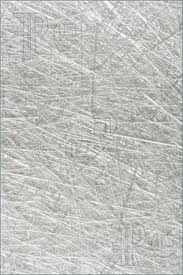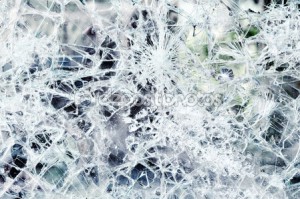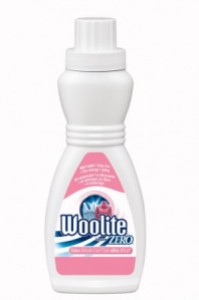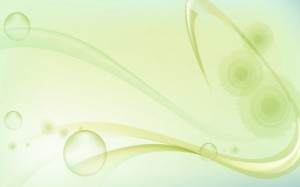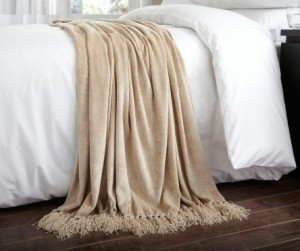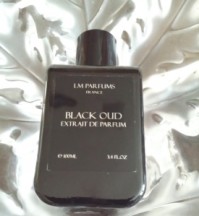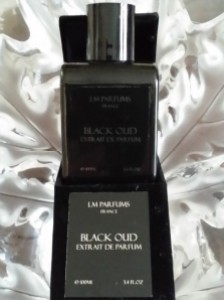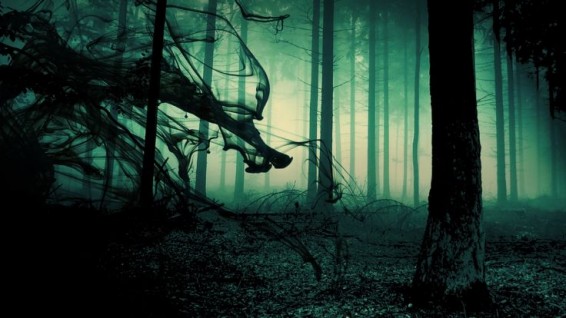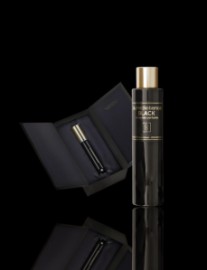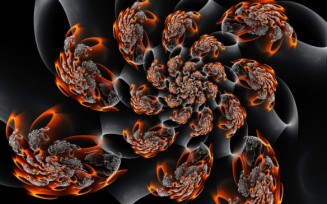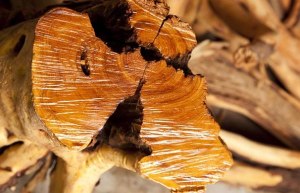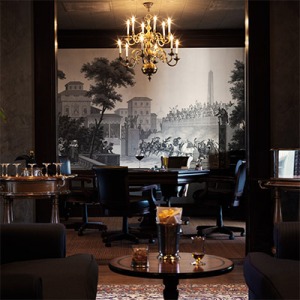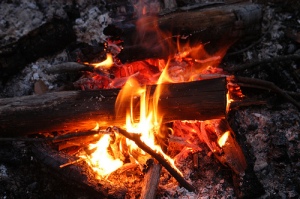A perfume with the feel of the past, concentrated as if distilled to its richest essence through the ravages of time, and brought back to life with a price tag from the future.

Source: Paris Gallery, UAE.
It’s hard to know where to begin in discussing Diaghilev, a 2013 release from the famous Roja Dove. The perfume has a history beyond just the ballet legend whose name it bears, a history that starts at an exhibition at the Victoria and Albert museum in 2010, and indirectly goes back much further still to a Guerlain fragrance with which it shares enormous similarities for a good portion of its opening hours. Plus, Diaghilev has a huge buzz about it, and not solely because of the Roja Dove name, as you will soon see. Perhaps the real reason why I find it so hard to know where to begin is because I’m simply not moved by Diaghilev. No matter how many times I try it, I recognise its quality on an intellectual level, but it does absolutely nothing for me emotionally. From the first time I tried it last year in Paris, to repeated tests now… my emotions are always at a firm distance.
Diaghilev is a pure parfum or extrait that was inspired by Serge or Sergei Diaghilev, the famous early 20th century ballet impresario who founded the legendary Ballets Russes. On his personal Roja Parfums website, Roja Dove describes the perfume and its notes as follows:
“Decadent Intoxicating Sophistication”
WARM, DRY, SWEET, FRUITY, SPICY, SOFT, & VERY SENSUAL
“I am immensely proud of this work. I love its rich opulence, its complexity and depth, volume, and sensuality. I was inspired by Diaghilev, one of the greatest creative forces of the twentieth century, who changed the world and totally re-wrote the rules – this creation is for exactly that type of person”. Roja Dove

Source: lth-hotels.com
INGREDIENTS
TOP: Bergamot, Lemon, Lime, Orange, Tarragon
HEART: Blackcurrant Buds, Heliotrope, Jasmine, Peach, Rose, Tuberose, Violet, Ylang Ylang
BASE: Ambrette, Benzoin, Cedarwood, Civet, Clove, Cumin, Guaiacwood, Labdanum, Leather, Musk, Nutmeg, Oakmoss, Patchouli, Peru Balsam, Sandalwood, Styrax, Vanilla, Vetiver.

Source: 123rf.com
Diaghilev opens on my skin with a flood of oakmoss on the most beautiful, animalic, castoreum-like base. The base is truly spectacular, especially in the opening 20 minutes. It’s like beautifully darkened, oiled leather with velvety, musky, dirty, and skanky undertones. There is no castoreum listed in Diaghilev, but it really smells like it to my nose. The raunchiness is kept in perfect balance; a touch sweet, urinous, and earthy all at once. It is not feral or fecal, but, rather, akin to the most gentlemanly dirtiness around. The musk is delicately dusted with earthy, dry, cumin, and infused with the sweetened, “fuzzy, warmed skin” characteristics of ambrette seeds (musk mallow).

“Novemthree” by Olaf Marshall. Source: vitaignescorpuslignum.blogspot.com
The overall bouquet is a simply perfect base for the vista of green that lies atop it. There is the carpet of oakmoss that is dense, pungent, lightly fusty, vaguely oily and mushroomy, and wholly amazing in its viscosity. The greenness is underscored by the small bits of earthy vetiver, which dance at the edges next to an extremely bitter lime peel. I don’t know quite how Roja Dove has replicated the feel of vintage, real oakmoss so well, but he’s done it in spades with something that feels like juices from the past that have been reduced down to a darkened thickness.
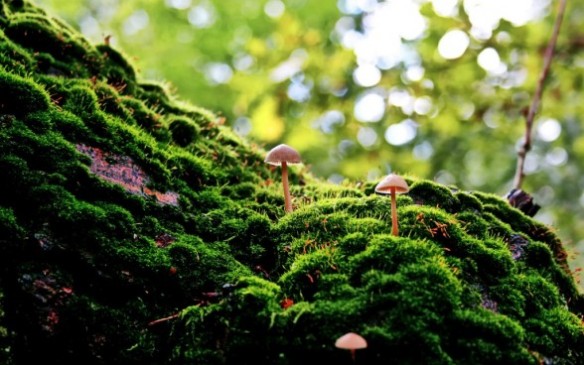
Source: wallpaperuser.com
In less than a few minutes, the colours change. A bright yellow arrives to dapple the mossy forest floor, followed by massive dabs of orange. The first is the bergamot, the second is the peach. The freshness of the former is a muted touch, while the heavy juices of the latter are quite noticeable on my skin indeed. The ripened fruit combines with the cumin to add to the fleshiness underlying Diaghilev, creating the image of musky, heated flesh that merely happens to be lying on a well-oiled leather couch made from castoreum in the midst of an oakmoss forest.

Jubilation 25. Photo: Basenotes.
It’s all very lovely, and all massively familiar. This is Mitsouko parfum, in vintage form, reduced to the level of an attar in density, and thoroughly infused with Amouage‘s cumin-flecked Jubilation 25 (Women). Every minute of Diaghilev’s opening two hours on my skin feels like Mitsouko drenched with Jubilation, right down to the light dance of the very well-blended florals. At this point, Diaghilev’s florals are an abstract, seamless blur that are hard to pull apart, though the jasmine stands out the most. Again, like Jubilation. (And later, it is the ylang-ylang, which is again like Jubilation.) There is even a light flickering fizziness of something nebulous like aldehydes, the way I would experienced with old Mitsouko. By the way, if we’re talking about echoes of famous perfumes, there is also a fleeting, tiny kinship to the post-1989, cumin-y, vintage version of Femme by Rochas as well, though Diaghilev is darker, drier, greener, more leathered, and less fruited.
Most of those differences can be chalked up to Diaghilev’s substantially concentrated Extrait formulation. It is certainly explains why Diaghilev’s oakmoss is much more dense than it is in Jubilation 25. And I’m sure the skanky bits in the Amouage perfume would feel heavily leathered and resinous as well, if the perfume had been amped up by a 1000 to an extrait level the way Diaghilev has been.

Source: RebootwithJoe.com
That said, I loved the opening 20 minutes of Diaghilev. The perfectly calibrated degree of cumin-y, skanky, leathered, castoreum-like velvetiness that rises up to bite you on the nose is glorious. And it’s so wonderful next to the dark oiliness of the heavy oakmoss, the earthy vetiver, and the bitter lime. The perfume has a real, substantial kick to it that makes it stand out at that point.
Unfortunately, the elegant meow of animalic bitchiness soon turns much more well-mannered, sedate and restrained in nature, as the dirty accords sink into the base. You can still detect them, quite easily if you sniff up close, but they blend into the overall blur of greenness that is dominated primarily by the dark, slightly fusty oakmoss with its peachy undertones. For me, by muffling the skanky whiffs, Roja Dove has de-fanged Diaghilev of its more modern, interesting touches, and moved the perfume squarely back a century to the well-bred, distant past.
Regardless, Diaghilev is a very nice, opulent, luxurious perfume in its opening stage. It is a perfectly seamless, extremely dense blend of green chypre notes with thick oakmoss, lime, bergamot, cumin, peach, amorphous florals, and touches of vetiver atop an oily castoreum-like, leathered, skanky base. It is monumentally heavy in feel at this point, as well, much to my great enthusiasm. Two big smears feel like the equivalent of 6 very large sprays of the most potent eau de parfum around.
Yet, to my surprise, the heavy Diaghilev wafts only 2-3 inches above the skin even in its opening. Spraying improved matters, but only moderately, by maybe another 2 inch at most. A friend and reader of the blog, “Tim,” was kind enough to send me a small spray atomizer of Diaghilev which I used in my 3rd test of the perfume, and there was no monumental increase in projection that I detected. The one difference is that spraying brought out the rose note after an hour, though it was still muted and muffled in that perfectly seamless blend of what really just seems like abstract “florals” from afar.
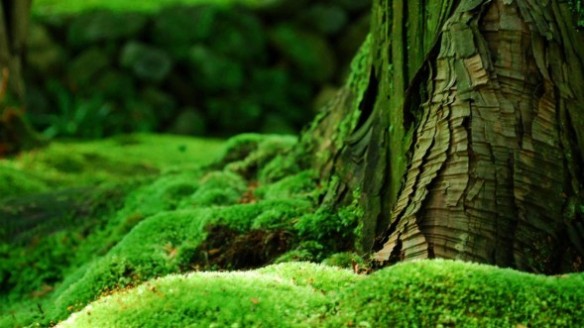
Source: 10wallpaper.com
45 minutes into its development, Diaghilev drops in sillage, and also turns much softer in feel. 90 minutes in, the perfume loses even more of its body, heft and density. It’s primarily an oakmoss scent with sharp lime, bergamot, amorphous florals, peach, atop a velvety dark base just lightly flecked with cumin. Part of the problem in trying to dissect Diaghilev is that it’s so perfectly melded that it is really hard to separate out its tiny details at times. You get the plethora of greenness and the chypre elements up front, but many of the other notes lurk behind, peeking out in the most polite manner. And I’m only referring to 6 or 7 of Diaghilev’s 30 ingredients. The remainder is wholly subsumed within the larger whole.
At the end of the 2nd hour, however, I noticed new elements darting about, weaving their way through the top notes. Now, there is: clove, nutmeg, guaiac wood, mossy patchouli, and cedar. For about 5 minutes, there is even a really pretty touch of soft, earthy, delicate violets. Yet, with the exception of the new spices at hand, most of the elements were mere flickers and are not really a profound presence in a strong, individual, clearly delineated way.
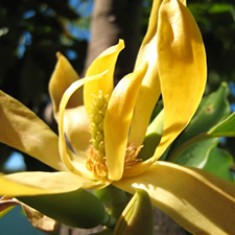
Ylang-Ylang. Source: Soapgoods.com
Much more noticeable instead is the sudden arrival of the ylang-ylang with its custardy, vaguely banana-like, rich undertones. It adds a lovely touch to the pungency of the oakmoss, and is also a great contrast to the skanky, leathered, darkly oily base. I also really like the introduction of the spices, especially the cloves which add a subtle heat to the scent, enlivening it. The guaiac adds a subtle undertone of smokiness, while the cedar brings a tiny burst of pepperiness. The overall effect is to veer Diaghilev straight back into Jubilation’s arms.
Every time that I’ve tested Diaghilev, I noticed what feels like a transitional bridge period that starts always about 2 and a half hours into the perfume’s development. Diaghilev starts to lose its purely oakmoss-chypre focus, and begins the slow move towards an oriental scent. After having reviewed a handful of Roja Dove creations at this point, I get the strong sense that he seems happiest and most comfortable when making Chypre-Oriental hybrids. Many of his best and most beloved fragrances certainly start off as Chypres before turning into pure Orientals, like, for example, Puredistance M and the two Fetish Extraits. At the very least, I think we can agree that he’s a master at the split genre.
Here, the transition is gradual. The visuals are the first to change. It’s as though an oriental autumn has hit the green, oakmoss-covered peach trees and florals in the cumin-dusted forest with its skankily leathered floor. The dark greens are now heavily covered by rich, spiced, brown-reds and by velvety, custardy, ylang-ylang yellow. Sprinkles of white appear from sweetened vanillic powder, as the benzoins and tonka stir in the base. The subtle patchouli element pops up its head to inject a wine-red colour, taking on a liqueured, sweet, jammy richness. The woods encroach on the dominant moss and peach duo, as the guaiac and cedar crowd around, casting dark shadows. Bitter nutmeg is countered by the first traces of a sheer, gauzy wisp of smooth amber.

Source: 1ms.net
Technically, it’s masterful, and theoretically, it should all be right up my alley. Yet, I’m unbelievably detached and disinterested. It’s not the sense of déja vu, but something that is very hard to explain. For me, Diaghilev feels like a technically perfect evocation of the classique tradition, but without a soul or a spark of passion in its depths. It’s like listening to a cover band who is playing all the right notes in a perfect rendition of some classic hit, but it doesn’t fresh, alive, distinctive, or individual. At least, it doesn’t for me. I feel as though I’m stuck in a room listening to Stephen Hawkings giving the most technically correct elucidation of theoretical physics… in Aramaic. Diaghilev’s soul simply gets lost in its correctness, its technical mastery, and in its translation of the past.

Vintage Ballet Russe poster. Source: Pinterest.
The perfume continues its march towards Orientalism. At the start of the 4th hour, Diaghilev is primarily a spicy cinnamon, clove and nutmeg dominated, abstract “floral” scent on my skin, with earthiness and woody elements over a leathered, castoreum-like base lightly infused with skanky civet, labdanum amber, and a whisper of warm ambrette muskiness. By the middle of the 5th hour, it is almost a skin scent that feels extremely abstract. Warm, musky, earthy, sweet, and spicy are the dominant elements. Soon, there is the sense of dry earthiness like soil that has been sprinkled with cinnamon, nutmeg, cloves and vetiver. Dancing at the edges is a dry, brown patchouli. The tiniest veins of labdanum amber, tonka vanilla, and musk run through it all like golden threads. Diaghilev is still strong if smelled up close with your nose on your skin, but it feels like a silken, brown-red sheath of earthy spiciness and sweetness, dappled at its base with musky skankiness from various accords.
At the start of the 7th hour, Diaghilev sets its course for the next few hours. It is primarily a gauzy, soft labdanum amber scent with abstract spices, skanky elements and a touch of vanilla powderiness. It remains that way for ages, until it finally turns into cinnamon, vanilla powder from the benzoins and tonka atop the thinnest smear of civet-y muskiness. In its dying moments, Diaghilev is merely spiced, sweet powder. All in all, Diaghilev consistently lasted over 14.5 hours on me when I applied moderate amounts, and over 16 or 17 hours with larger quantities.

“Copper abstract” by StarwaltDesign via deviantart.com. http://starwaltdesign.deviantart.com/art/Copper-Abstract-207268167
It’s hard to review Diaghilev without bringing up its price. I never examine perfumes in a vacuum, but I usually state that price is an individual, wholly subjective assessment. That’s undoubtedly why most perfume bloggers rarely talk about the matter when assessing fragrances. However, when you have a perfume that costs over $1000 with tax — that retails for $990, €990 or £750 — then price becomes something more quantifiable and objectively critical. In fact, I’d argue that price becomes an integral part of the perfume’s fabric, as much as its notes or its olfactory genre. Intentionally so.

Roja Dove via his Twitter feed.
The basic bottom line seems to be that Roja Dove is aiming for a clientele that is part of the 1%. He’s aiming for the very rich, or, in the case of his special “Roja” perfume that costs well over $4,000, perhaps the super rich. He’s intentionally seeking exclusivity in a way that even Joel Arthur Rosenthal, the stratospherically expensive, legendary jeweler, isn’t trying to do with most of his JAR perfumes. It’s Roja Dove’s right to price his stuff as he sees fit, and there is no doubt that all his fragrances scream high-quality, expensive luxury. No doubt at all. But it is my right to think them over-priced at times, times like now.
I’ve pondered the issue of Diaghilev’s cost for days, and I can certainly see all the logical reasons why people would spend the money on it. But would I, even if I had the money to buy 10 Diaghilevs? I doubt it. I’ve thought about it in-depth, and I’m being honest. Diaghilev feels old in a way that never once crossed my mind when I wore Amouage’s Jubilation. I haven’t tried vintage Mitsouko in years, so I don’t know how I would feel about it now, but I never liked Mitsouko enough to be willing to spend $1000 on it. And, honestly, for me, the very best part of Diaghilev is its opening 20 minutes which are truly glorious. After that, when the skankiness subsumes itself into the base, it loses the one real spark of passion and distinctiveness that it exuded for me. It turns into a very expensive-smelling, beautifully crafted perfume that someone like Joan Collins would love. Glamourous, but dated.

Nijinsky and Pavlova, the two superstars of Les Ballets Russes. Vintage image. Source: jbtaylor.typepad.com
There are quite a few reviews for Diaghilev out there, but the most fascinating one comes from The Non-Blonde. I will quote parts, but I encourage you to read the long review in its entirety, as it echoes many of my sentiments. And the opening two sentences are a doozy:
A very successful perfumer who’ll remain nameless described the perfumes from Roja Dove’s line as “belong in a museum”. After a few seconds of thought he added, “so does Roja”. I didn’t inquire further as to what specific aspect of Roja Dove’s public persona he was referring. Your guess is as good as mine. Diaghilev, a larger-than-life chypre is a perfect example for what the famous perfumer meant. Diaghilev, with its mélange of notes is so over the top that if I weren’t standing at the Bergdorf Goodman counter with the tester right in front of me when I first smelled it, I’d have thought (convinced even) that someone has mislabeled a vintage perfume sample. A very very vintage perfume. Something from the 1920s, perhaps, when leather, oakmoss, all the spices in the world, and a thick overripe floral bouquet could be thrown together and then worn in public without shame.
There’s cumin in the top notes which the husband detected immediately while my own skin smoothed it over. I can smell traces of many thick and plush perfume ideas, the ghosts of famous perfumes the way they smelled back when Louise Brooks, Dorothy Parker, Lillian Gish and Marlene Dietrich used to wear them. Diaghilev is rich, plush, and very animalic, padded with a thick layer of oakmoss that I can smell throughout the perfume’s development. It’s everything I can ask for in a scent. In a different time and place (ok, and a different personality) Diaghilev could have easily been a contender for my signature scent.
They no longer make them like that. They no longer sell them like that. And if you want to wear this type of perfumes you probably need to run with a very specific crowd who appreciate things like that. There aren’t all that many of us around these days, which is probably the reason that Diaghilev stands out so much and feels so shocking. You just don’t smell perfumes like this unless you’re well-versed in vintage perfumes. […]
Here’s the thing: Diaghilev is a magnificent perfume. It’s a very fitting tribute to Sergei Diaghilev and his uncompromising artistic vision. But I almost feel like an oblivious Gwyneth Paltrow prattling about in her GOOPy ways as I’m writing this, because it’s nearly impossible in this case to separate the excellent perfume from its positioning at the very top of the fragrance market. Roja Dove has made sure of that. [snip]
You should read her piece in full. In my case, I doubt I would be inspired to wear Diaghilev, whether it were gifted to me or cost $100. From the very first time I sniffed it at Jovoy around the time of its release, I shrugged and moved on. “Very well done, nice, but …. eh.” I suspect my problem is the lack of strong personality, and not the very dated, “museum” feel of the perfume. I love vintage perfumes, but this feels far too well-bred, dull, and old. Plus, given how very little time I have to wear perfume for myself these days, I would never waste a precious “free day” on Diaghilev. It wouldn’t even cross my mind. (The fascinating Jubilation 25, however, would be a very different matter….)

Diaghilev, the original EDT limited-edition bottle.
Speaking of museums, there is an important issue I need to cover: the original Diaghilev. A few commentators to the Non-Blonde’s post brought up the fact that Diaghilev was originally released in 2010 as part of an exhibition that commemorating Les Ballets Russes at the Victoria & Albert museum. It was a limited-edition fragrance which cost £75, and supposedly only 1000 bottles were released, though there is mention of Roja Dove selling refills in huge 250 ml aluminium bottles on his website. I paused at the comments, like the one talking about “the earlier EDP version’s affordability” and how it felt like “naked manipulation of the consumer.” And I very much agreed. It seemed like bloody cheek for a man to sell a perfume for £75, but then, 3 years later, stick the exact same thing into a crystal-capped bottle and sell it for exactly ten times as much at £750. It seemed outrageous, as if he were pulling the wool over your eyes, while laughing all the way to the bank.
Except that is not what actually happened. I did some digging, and the facts are different. It’s true, as Roja Dove discusses in old blog posts on his website, he made Diaghilev for the exhibition and, yes, he did release it back the for a substantially lower price. There are two key differences, however, between the original Diaghilev and the one released in 2013. For one thing, the original was an eau de parfum, though a number of people also state that it was a mere eau de toilette. Regardless, the new one is an Extrait, and, as noted, has the dense viscosity of an oil in feel, at least in the first few hours. For another, the current Diaghilev is supposedly remastered and changed.
The website, Cosmetopica, writes about that last fact in a glowing review for the new Diaghilev where she also explains the differences between the versions. Her article reads, in part, as follows:
Why the change, I asked Roja’s PR? Because Roja visited the Kremlin, he said. Once he got to Russia, he completely reformulated his ideas about Diaghilev and his oeuvre, and the perfume had to change with it.
The immediate effect of the opening notes of the ‘new’ Diaghilev is identical to the ‘old’ Diaghilev but it only lasts a second before there is then a massive bloom of citrus like falling head-first into a vat of bergamot. You might not get out alive, but it would be a good way to go. To this untutored nose, the citrus melange smelt above all like tangerines (a note that I see is absent). It is also strong enough to knock a horse over at 20 paces.
This phase of the perfume lasts a good 30 minutes – a very long time for citrus – and is fabulously rich and oily, not light and sparkling. […] [It] has the richness of the real deal, due to its use of natural materials in abundance.
I loved this phase of the fragrance, but it got even better in the second act. The floral heart emerges over time like a full orchestra tuning up and to be honest, I found it impossible to pick out the notes. It is at this point that the fragrance morphs back into the character of the original Diaghilev – true, old-style grand perfumerie. Ten hours later, it’s still going strong, wafting up from your clothing whenever you move or sweat, but “curiously well-behaved,”[.]
The next morning, the animalic facets are still there, which I love. I like a bit of skank in a perfume […] So the base notes of civet and musk that hang around for about 24 hours on clothing are just fine by me. […]

Source: scent-intoxique.com
As for the issue of Mitsouko, Cosmetopica writes:
Diaghilev mark 1 smells like Mitsouko should and no longer does, and that, apparently, is no accident. Having read that Diaghilev the man used to spray his curtains with Mitsouko, this is partly Dove’s interpretation of what that atmosphere must have been like.
Does it smell like Mitsouko? Well no. It smells like a Guerlain we haven’t met yet – no accident, I guess, given that Dove worked for the company before it was swallowed up, masticated and vomited back out by LVMH.
I agree that it doesn’t smell purely and wholly like Mitsouko. However, to me, it starts off strongly as a mix of Mitsouko with Jubilation 25 (Women), before eventually shrugging off the Guerlain and turning more into Amouage territory. And I’m not the only one who thinks that. On Fragrantica’s page for Jubilation, 8 people noted a resemblance to Diaghilev, while 3 voted for Mitsouko. There are the same 8 votes for Jubilation on the actual Diaghilev entry as well.
On Fragrantica, the reviews for Roja Dove’s creation are almost all uniformly admiring. The shortest, flattest comment comes from one person who writes simply, “If Mitsouko and Vol de Nuit met and had a baby, their offspring would be Diaghilev.” Others, however, wax rhapsodic. Here are two of the shorter reviews representing the general consensus:
- As usually with Roja Dove’s fragrances, Diaghilev as well is strongly inspired by big fragrances of the past. In this case, the old-fashioned chypre structure, comes directly from huge compositions such as Mitsouko and Sous Le Vent. A wonderful fizzy citrusy opening evolving into an extremely refined floral middle phase to then turn into a fresh and rich mossy vetiver drydown which is not so distant from the latest phases of Onda Extrait. [¶] The level of appreciation of Diaghilev is strongly related to one’s personal preference towards extremely classic fragrances. That said, if you like the genre, this is one of the best chypres currently available on the market.
- Insanely opulent and suave chypre that, hilariously, reminds me of Aromatics Elixir. A smooth oak moss flanked by top-shelf patchouli and vetiver with minuscule touches of citrus and culinary herbs floating around. Ambrette and civet are present, but highly civilized; many of the myriad fruit / floral notes are there, but not prominent enough to isolate. The whole thing is big, round, and undeniably impressive, but it’s hard not to snicker at the kind of over-the-top luxury it’s signifying. Excellent, beautiful, stunning, and a tad ridiculous. [¶] Break out your Liberace furs and bling, slap some of this on, then go stomp around the neighborhood like you *own* the damn place.

Source: 10wallpaper.com
Both those reviews come from men, by the way, which should alleviate any concerns that you may have that Diaghilev is a woman’s fragrance. As for the price, well, a good response comes from “Tymanski,” my friend who so generously sent me a small atomizer from his own bottle:
i never EVER thought i would even contemplate spending a week’s pay on a bottle of perfume. i made the fateful step of trying this juice out the other day and over the course of the day this smell just got better & better & better. i was extremely sceptical of roja dove – tried several and thought “what’s this guy pulling here”, but with Diaghilev, i take it all back. this is just spectacular on every level. a chypre of such depth, elegance, balance, simply a perfect fragrance. i am not going to start with notes, as this is prodigiously complex; i will say that the rose middle is the finest i’ve ever smelled. the sillage is quite discrete but very solid, and longevity is where it should be for an 850 euro (!!!) parfum. the long drydown has a beguiling affinity with amouage epic man (another favouite). some say this is similar to vintage mitsouko, i really can’t say. it does embody everything i love about chypres in the end, i was seduced.
The bottom line for you is that you should seek out a sample of Diaghilev if you’re a lover of rich chypres, vintage perfumes, Mitsouko, Jubilation 25, and/or very heavy, strongly classical fragrances. Do it for the experience, particularly you’re relatively new to perfumery and want to learn about opulent chypres done in the vintage manner. (Consider it an expensive educational lesson, if you will.) For those who don’t fall into any of the aforementioned categories, I am somewhat dubious as to your reaction. I suspect that you might find Diaghilev overly heavy, very dated and museum-like indeed.
As to what will happen once you smell it, well, then the issue of price will come back to bite you squarely on the nose. You will either: be unable to separate the issue of the cost from the smell, much like The Non-Blonde; think Diaghilev is worth it and be in a quandary; or be like me and intellectually recognize Diaghilev’s quality, but be utterly unmoved nonetheless. One thing is absolutely certain, though: the price tag is the 800-pound gorilla in Diaghilev’s room. £750 to be precise.
DETAILS:
Cost & Availability: Diaghilev is a pure parfum or Extrait which is available in a 100 ml/3.4 oz size which costs $990, €990 or £750. In the U.S.: Diaghilev is carried by New York’s Osswald and Bergdorf Goodman. Outside the U.S.: In the UK, you can buy Diaghilev from Roja Dove at his Haute Parfumerie on the 5th Floor of Harrods London, from Harrod’s online, or from Roja Dove’s e-store at Roja Parfums. In France, Jovoy Paris seems to be the exclusive distributor for Roja Parfums and sells Diaghilev for €990. In the UAE, the Paris Gallery has Diaghilev for AED 5,175. For all other locations, you can use the Roja Dove Locations listing which mentions more stores from Poland to Germany, Switzerland, Lithuania, Russia, and the Ukraine. By the way, in Russia, Roja Dove is supposed to be at Moscow’s tsUM, but I couldn’t find the brand listed on their website when I did a search. There are no Canadian, Asian or Oceania vendors. Samples: I purchased my main, core sample. It came from Surrender to Chance which sells Diaghilev starting at $7.49 for a 1/4 ml vial.

